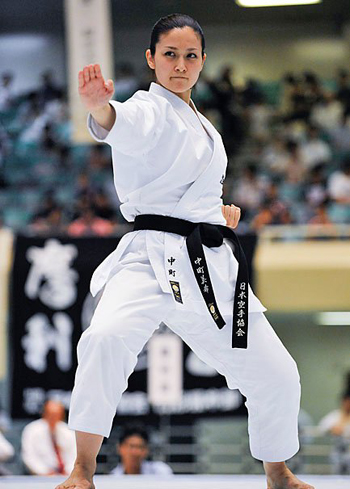



A brief history of karate
The beginnings
The origins of karate tend to be shrouded in mystery and secrecy however it’s believed to have originated over 1,000 years ago firstly in India and then through to China, Okinawa and Japan. At that time, the Buddhist monk Bodhidharma (founder of Zen Buddhism) travelled to China to the Shaolin Temple. There he found the monks were physically unable to keep up with his teachings so he devised a training system to develop these monks both physically and spiritually. Eventually the monks became some of the best fighters in China and travelled from China to spread the word of Bodhidharma and his fighting system.
One devout follower of Buddhism was the then son of the King of Okinawa and when he eventually became king, he immediately placed a ban on weapons in Okinawa which, at that time, were an integral part of martial arts training in that country. In 1609 Japan invaded Okinawa and extended the ban to outlaw the training of any martial art. This drove the practice of martial arts underground and training was done in small groups in secret. In 1902 , after 300 years, the Japanese government lifted the ban on martial arts training and in fact decided the training should be included in middle school physical education classes.
Introduction to Japan
Master Funakoshi Gichin, a school teacher in Okinawa, had been a ‘secret’ student of Okinwa-Te (Okinwan Hand) for many years when the ban on training was lifted and now he could continue his training without fear of discovery and persecution. In the following years he proceeded to promote Okinawa-Te and in fact changed the name to “Kara-Te” (Empty Hand) to symbolise the training style not using any weapons.
In 1922 the Japanese government Ministry of Education invited Master Funakoshi to give a demonstration of his karate to the First National Athletic Exhibition in Tokyo. At that time karate was unknown in Japan and following the exhibition, Master Funakoshi remained in Japan teaching and promoting his karate and in 1948, at the age of 80, he started the Japan Karate Association (JKA) which became the breeding ground for many great Shotokan Karate masters one of which was Sensei Nakayama Masatoshi who took over the role of head of the JKA in 1957 after the passing of Master Funakoshi. Sensei Nakayama, over the ensuing years, proceeded to promote the world wide development of Shotokan Karate.
Today
Shotokan Karate-do is one of the four main schools of karate-do practiced around the world today, the other three being Goju-Ryu, Wado-Ryu and Shito-Ryu. The Shotokan karate we practice today has undergone decades of evolution initiated primarily by Sensei Nakayama. It combines a powerful, dynamic style with graceful, even beautiful movements, yet its core doesn’t compromise the teachings of Master Funakoshi.
Successive generations have seen many brilliant Shotokan karate instructors evolve from within Japan and around the world and one of these is Sensei Hitoshi Kasuya. Kasuya Sensei’s early days were as a member of the JKA headquarters and then as head of the international division of Shotokan Karate International. In 1990, Kasuya Sensei formed the World Shotokan Karate-do Federation (WSKF) which now has over 90 member countries around the world. His teachings are closely aligned with the philosophies of Master Funakoshi but he has also brought in dynamic spinning techniques not seen in any other style of karate. These techniques are powerful yet graceful at the same time, extremely practical and work to not only move the body in ways not often done in modern karate, but aid to enhance ones karate immensely.
Today’s karate has many facets for modern day students (karate-ka). The health benefits from karate are appealing as are the self defence and many other spin-off benefits of training karate and today we have a side of karate that even the great masters from so long ago could not envision . . . competition, or sports karate.
At World Shotokan Karate-do Federation (Aust.) we assiduously follow the style of karate as taught by Kasuya Sensei. We value both the contemporary martial art that is karate, but also rigorously maintain the link with tradition that our style has spanning over 1,000 years.
